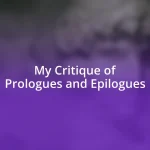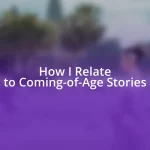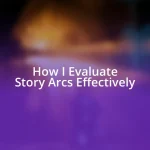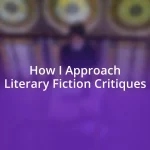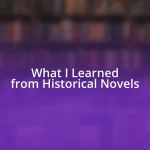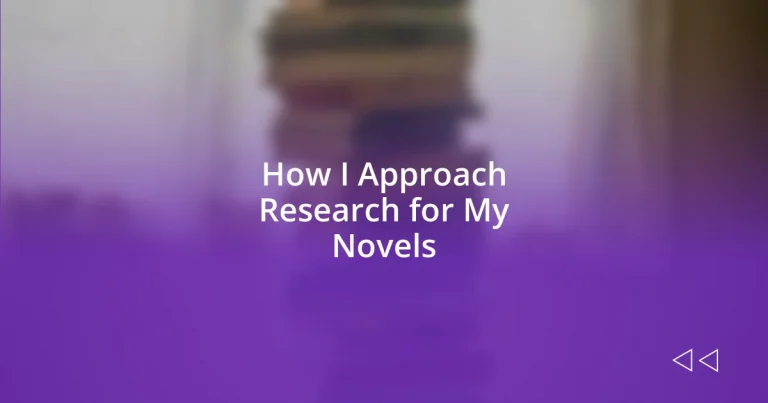Key takeaways:
- Research enhances authenticity and credibility in storytelling, creating deeper connections with readers through accurate representations.
- Mixing various research methods, such as hands-on experiences and expert interviews, enriches narrative depth and understanding.
- Continuous feedback and refining from beta readers or subject matter experts are crucial for ensuring accuracy and resonance in character portrayals and plot development.
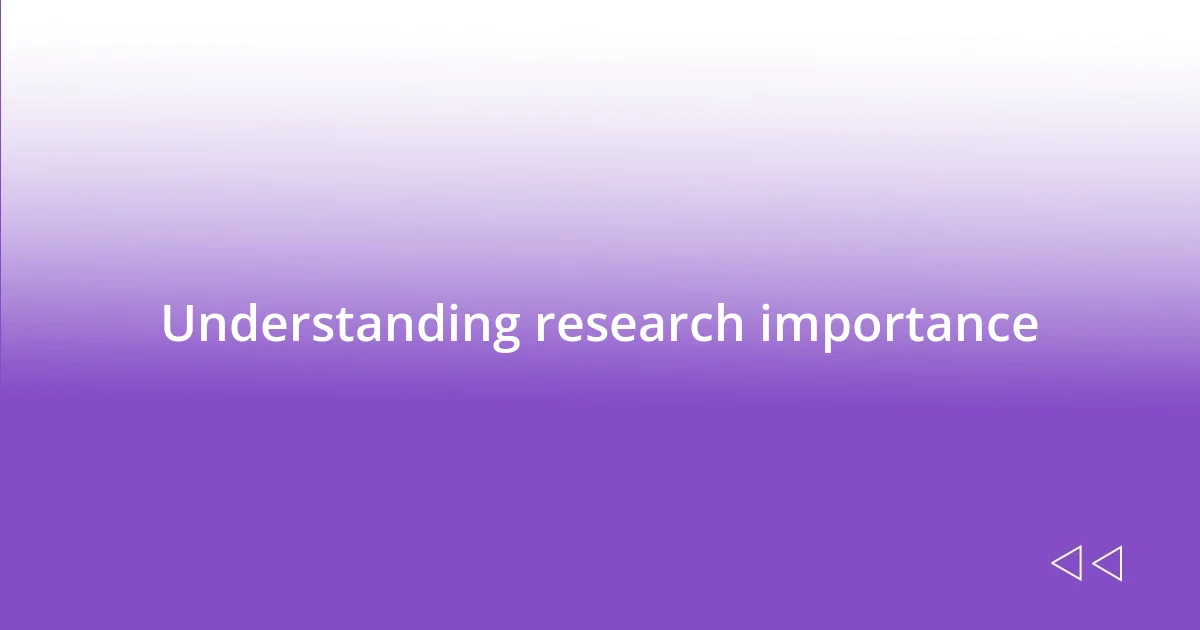
Understanding research importance
Research is the backbone of my novel writing process. It’s not just about collecting facts; it’s about immersing myself in a world that’s foreign to me. I still remember the thrill of diving deep into medieval architecture for a recent project. The more I learned, the more vivid my scenes became, igniting my imagination in ways I never anticipated. Isn’t it fascinating how a single piece of information can breathe life into a character or setting?
Moreover, research fuels authenticity and credibility in my storytelling. I often ask myself, “How can I expect readers to trust my narrative if it’s riddled with inaccuracies?” I once wrote a scene set in an old library, only to discover through my research that the architecture wouldn’t have existed in my chosen time period. Not only did I feel a twinge of embarrassment, but it also pushed me to become more diligent. This care strengthens the trust between my readers and me, creating a deeper connection.
I’ve come to appreciate that research is also a journey of discovery. Each new piece of information often opens up unexpected avenues for plot development. For instance, while exploring the history of a small town, I stumbled across a local legend that sparked an entire subplot in my story. It was like finding a hidden gem that transformed my narrative. Have you ever had a serendipitous moment like that in your own creative process? It’s those unexpected findings that can lead to some of the most compelling storytelling.

Choosing the right research methods
Choosing the right research methods is crucial for me as a novelist. I often find myself weighing the benefits of various approaches, like hands-on research versus digital exploration. For instance, while I once read numerous articles online about 19th-century boats, stepping onto a replica vessel made all the difference. The sway of the deck underfoot and the sound of water slapping the hull were experiences that simply can’t be captured through text alone.
When I’m deciding on research methods, I try to align them with the specific needs of my story. Sometimes, a casual conversation with an expert can lead to insights I would never find in written sources. I remember attending a local historical society meeting; the stories shared by attendees added layers to my understanding of the era. Their lived experiences enriched my narrative in unexpected ways. Have you ever met someone whose story changed your perspective on a topic? That kind of engagement can genuinely make the difference in how I construct my narrative.
Additionally, I believe mixing different research methods gives me the best chance at creating a well-rounded understanding of my topic. I often rely on books for depth but also complement that with documentaries, interviews, or even immersive experiences like workshops. The key is to remain adaptable. For instance, while working on a novel about culinary traditions, I found combining cooking classes with reading about the history of the cuisine provided a richer, more flavorful backdrop for my writing.
| Research Method | Description |
|---|---|
| Books | Great for in-depth understanding and historical context. |
| Interviews | Offer personal insights and stories that can influence my narrative. |
| Immersive Experiences | Provide first-hand knowledge, making settings and actions more authentic. |
| Online Research | Useful for quick facts and to discover new topics but can lack depth. |
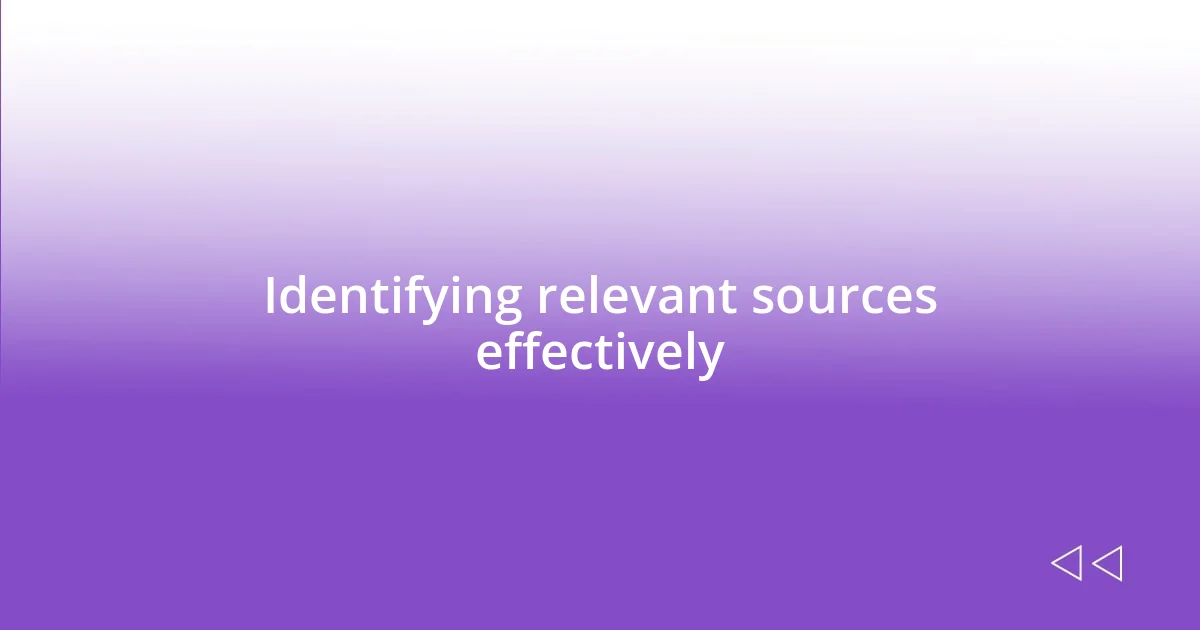
Identifying relevant sources effectively
Identifying relevant sources effectively can often feel like finding a needle in a haystack, but I relish the challenge. It’s about sifting through countless materials to uncover the gems that truly resonate with my story. I recall a time when I was organizing my materials for a novel set in the 1920s. I dove headfirst into social history and stumbled upon first-hand accounts from women of that era. These personal stories not only enriched my characters but also gave me a deeper understanding of their struggles and triumphs. It was a moment of connection that left me feeling energized and inspired.
- To identify relevant sources, I focus on:
- Credibility: I seek out established authors or experts in specific fields.
- Engagement: I look for sources that evoke emotion, helping me feel the subject matter.
- First-Hand Accounts: Oral histories or interviews often provide unique perspectives that historical texts can’t capture.
- Specificity: I prioritize sources that relate directly to my plot or setting, avoiding the noise of irrelevant information.
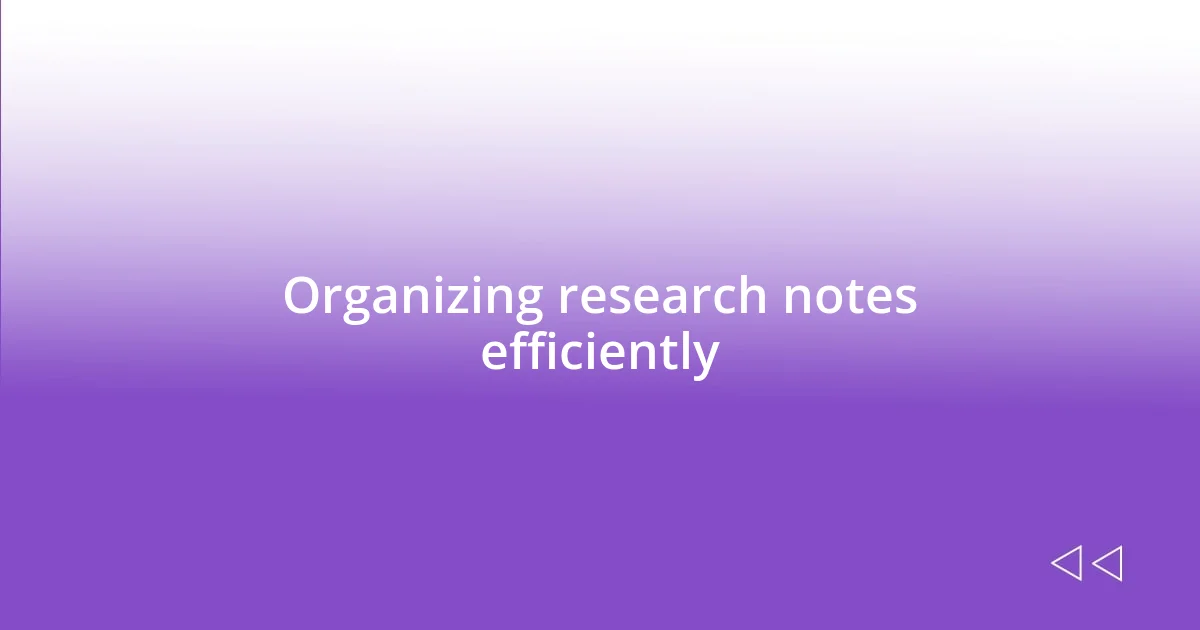
Organizing research notes efficiently
When it comes to organizing my research notes efficiently, I lean heavily on digital tools and systems that keep my thoughts structured. For example, I use applications like Evernote or Notion to categorize my findings based on themes or chapters. This way, when I dive into writing, I can easily pull up the exact information I need without stumbling through stacks of paper or endless folders. Ever been in a situation where you know you have the perfect reference but can’t find it? I’ve been there, and it’s frustrating!
In addition to using digital tools, I also find it useful to have a physical notebook dedicated to brainstorming ideas and jotting down spontaneous thoughts that arise throughout my day. There’s something about pen on paper that sparks creativity in a way typing doesn’t quite match. I recall an evening at a coffee shop, where I scribbled down an entire character backstory inspired by the person sitting next to me. Those handwritten notes all become part of my organized chaos, waiting to be woven into my narrative.
I also employ color coding for different topics, which adds a visual element that makes sorting through information much more intuitive. For instance, blue might denote historical facts, green for character development, and yellow for plot points. It’s like creating a painter’s palette for my novel, combining colors of knowledge into a cohesive masterpiece. Have you ever used a system that just clicks for you? Finding that organizational method can become a game changer in keeping my creative flow uninterrupted.
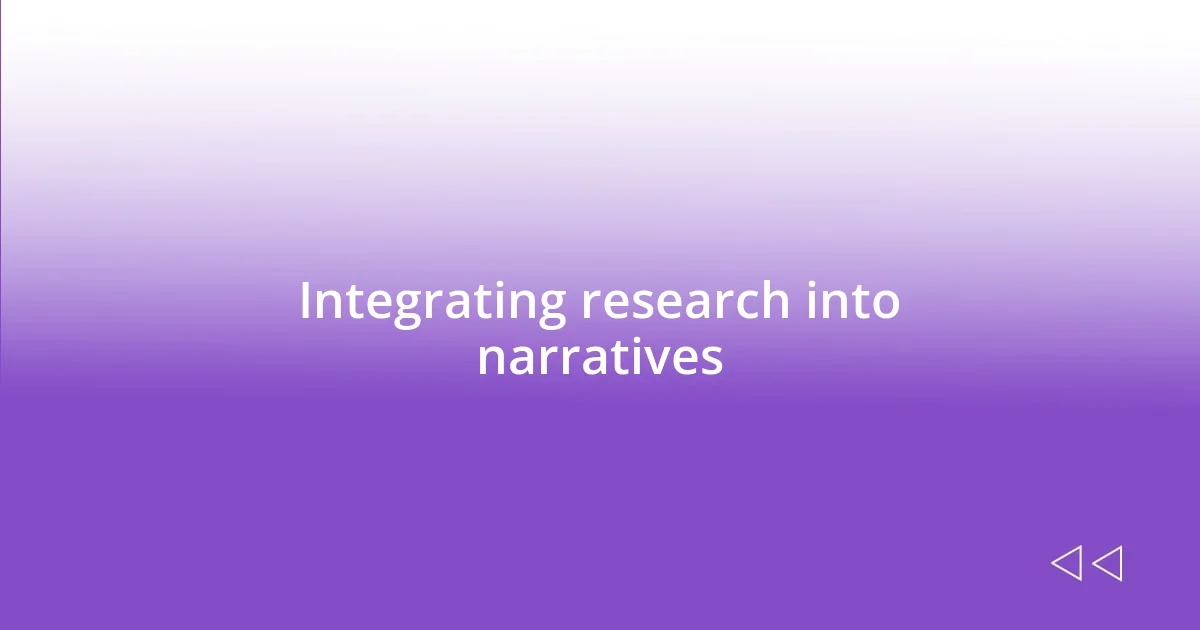
Integrating research into narratives
Integrating research into narratives is where my passion truly shines. I often find that the facts and insights I gather breathe life into my characters and settings. For instance, while researching a novel set in the ancient world, I discovered the customs surrounding rituals. Instead of simply stating these customs, I wove them into my character’s journey, allowing their experiences to reflect the cultural significance behind each act. I still remember the moment my protagonist hesitated during a ceremony, mirroring my own feelings of reverence as I read about those ancient practices. Isn’t it fascinating how research can turn mere words into moving experiences?
I also think about how to seamlessly blend factual details without overwhelming the reader. When I write about a historical event, I aim to distill the essential elements without getting bogged down in minutiae. For example, when tackling the French Revolution, I chose to focus on individual stories of resilience rather than the sweeping political changes. I want my readers to connect emotionally with the characters’ challenges and victories, feeling as though they’re standing right beside them. Have you ever read a passage that made you feel like you were truly there? That’s the kind of magic I strive to achieve through careful integration of research.
One of the techniques I find most effective is using research as a backdrop that supports the plot rather than driving it. In one of my recent novels, rather than making a geographical feature a mere setting, I used it to enhance the character’s emotional state. A treacherous mountain pass mirrored the character’s own struggles, and this connection added depth and tension. It’s moments like these that illustrate how research can be an integral part of the narrative, seamlessly enriching the reader’s experience. How do you think research influences the essence of storytelling? For me, it transforms the narrative from a simple tale to a resonant journey.
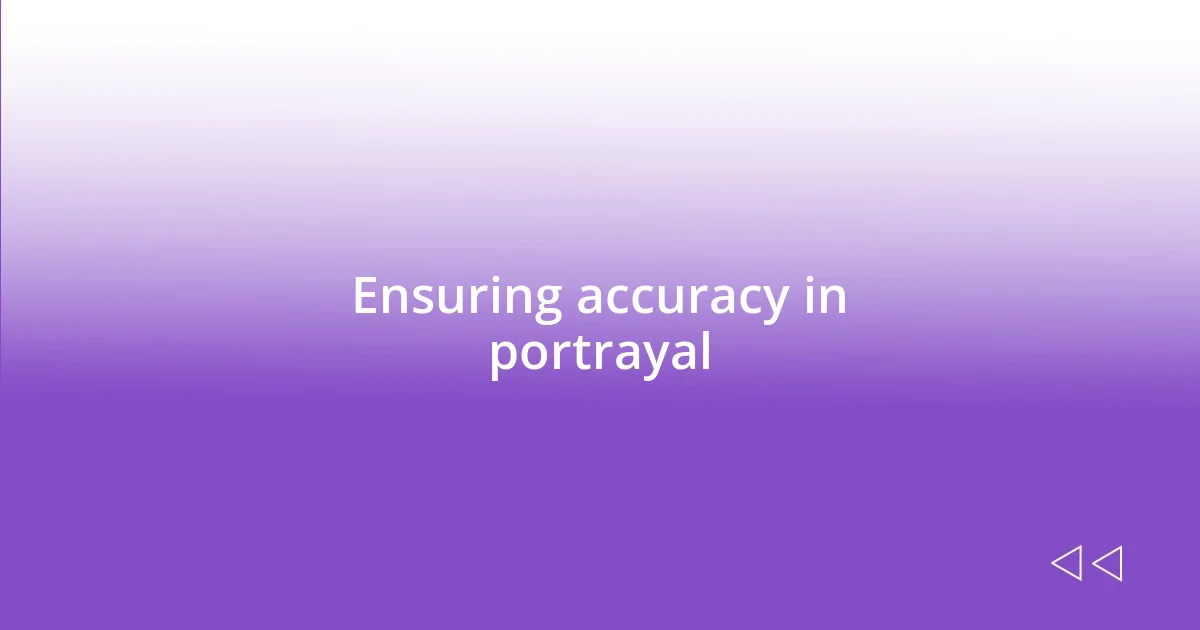
Ensuring accuracy in portrayal
Ensuring accuracy in portrayal is something I take very seriously in my writing. Accuracy isn’t just about facts; it’s about the emotional truth behind those facts. I once wrote a character who was a first responder, and I immersed myself in interviews with real-life paramedics to capture their experiences authentically. Their stories of resilience and vulnerability taught me how to reflect that delicate balance in my character’s portrayal. Have you ever felt that a story truly resonates because the emotions feel real? That’s exactly what I aim for.
To solidify the authenticity of my characters and their environments, I also dive into various sources. I often explore documentaries, podcasts, and books covering the topics I want to portray, ensuring I capture the nuances that make a life experience genuine. For example, while researching for a novel set in a small coastal town, I stumbled upon local folklore that helped shape my character’s motivations and fears. The richness of the local culture informed how I described their interactions and struggles, weaving in details that grounded my narrative in something real. Don’t you think details can elevate a work from ordinary to extraordinary?
Moreover, I prioritize feedback from subject matter experts when possible. After writing a scene involving a historical event, I reached out to historians to check my accuracy. Their insights not only corrected a few misconceptions but inspired me to add layers I hadn’t considered before. It was enlightening to see how a single conversation could enhance the authenticity of my portrayal. How do you ensure that your portrayals are accurate and resonate with truth? For me, it’s all about continuous learning and embracing the insights that come from diverse perspectives.
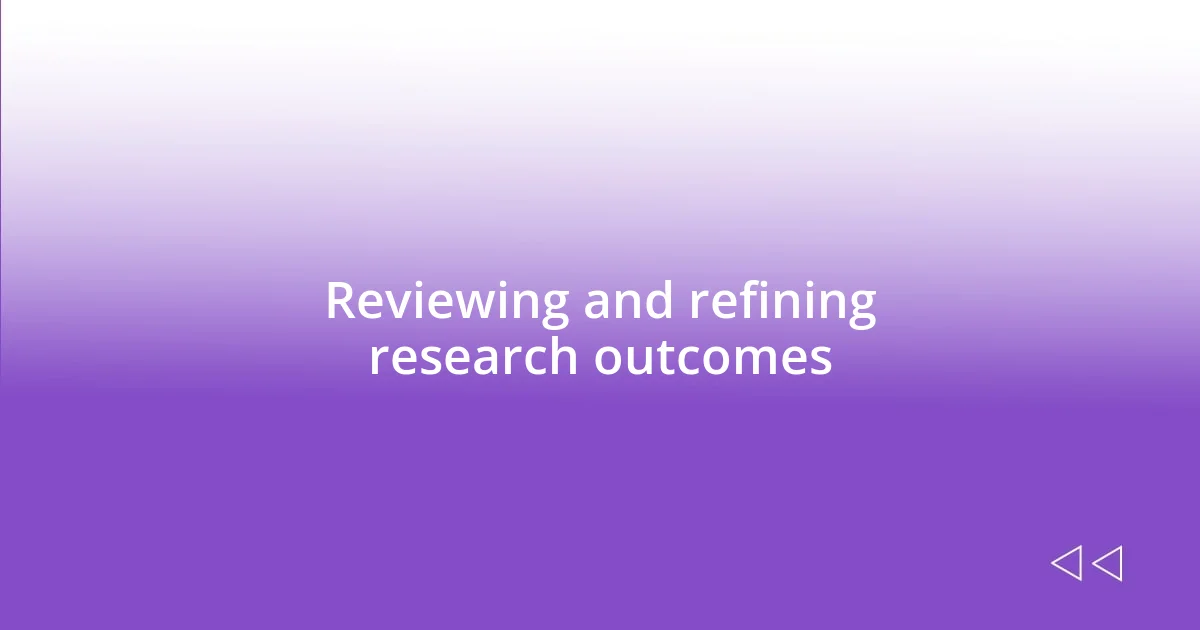
Reviewing and refining research outcomes
When I dive into reviewing and refining my research outcomes, it often feels like unraveling a fascinating puzzle. I meticulously sift through my notes, highlighting the ideas that sparked joy or intrigue during the research process. I can recall a time when I discovered a lesser-known historical fact that completely shifted my perspective on a character’s motivations. It was almost like finding a hidden treasure, and I knew right then that I had to refine the narrative to include this detail, allowing readers to uncover the layers alongside my characters. Don’t you love those moments of discovery that enhance the story?
After identifying the key pieces, I focus on structuring the information to flow naturally within the narrative. I regularly find myself evaluating how each research element plays into character development and plot progression. For example, I once wrote a scene where a character found solace in a specific historical landmark, which I had initially mentioned in passing. By reevaluating my approach, I was able to seamlessly weave it into their emotional arc—turning a backdrop into a significant turning point. How often do we realize that even minor details can take a narrative to new heights?
Feedback is another crucial aspect of my reviewing process. I often share my outcomes with trusted beta readers or fellow writers who can provide insights from a fresh perspective. A reader once pointed out a discrepancy in the timeline of events I had used, which made me rethink not only the accuracy of the details but also the rhythm of the story. It was a reminder that refining research is a collaborative journey. How do you engage others in your writing process? For me, their feedback often becomes the beacon guiding my revisions, helping my work resonate deeper with the audience.
